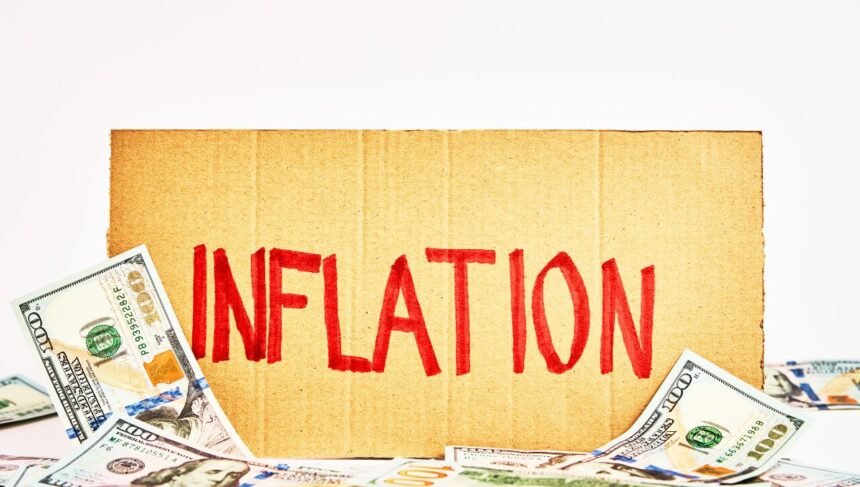In a positive sign for the economy and markets, the latest data shows inflation slowing to the Federal Reserve’s 2% target alongside solid economic growth. This has raised expectations that the Fed may start cutting interest rates as early as March 2023.
Core Inflation Matches Fed Target
The Fed’s preferred inflation gauge, the core personal consumption expenditures (PCE) price index, fell to a 2% annual rate in the third quarter based on revised Commerce Department data released Thursday.
The surprisingly mild inflation reading comes ahead of Friday’s November inflation figures, which economists forecast will show a further cooling.
Hitting the Fed’s targeted 2% core inflation rate even with strong 4.9% annualized GDP growth in Q3 helps explain policymakers’ decreased emphasis on runaway inflation in recent statements.
Markets Now Betting on Rate Cuts in 2023
Reflecting increasing conviction in a Fed pivot, markets are betting policymakers will cut the key benchmark rate from the current 5.25-5.5% target range to 3.8% by end-2024.
Futures pricing shows an 83% probability of a quarter-point cut to the fed funds rate at the March FOMC meeting, up from 79% odds on Wednesday. Markets now see a 42% chance of a cumulative 1.75 percentage points in easing next year, increased from 38%.
The real fed funds rate, which accounts for inflation, gives a sense of how tight monetary policy really is. In Q3, the real rate was between 3.25-3.5% with 2% core inflation.
That far exceeds the Fed’s estimate of a neutral 0.5% real funds rate over time at 2% inflation. The neutral rate neither speeds up nor slows down the economy.
Core PCE Expected to Show Further Disinflation
November’s consumer price index rose 0.3% month-over-month after stripping out food and energy volatility.
However, falling producer prices likely seeped through to softer core PCE figures, contributing to the Fed’s newly patient stance at this week’s meeting.
Economists predict a 0.2% monthly gain in November’s core PCE, slowing annual inflation to 3.4% from October’s 3.5%. But with forecasts ranging from no change to 0.2%, an upside surprise remains possible.
The headline PCE index including food and energy prices is seen unchanged for the month, slowing the yearly rate to 3% flat.
However, both PCE measures could print below estimates given the Q3 core rate’s downward revision to 2% annualized from 2.3% previously.
Economy Still Growing Steadily
Alongside the easing inflation pressures, the economy continues expanding at a healthy clip even as the Fed aggressively tightens policy.
Q3 GDP growth was trimmed to a still-solid 4.9% annualized from the earlier 5.2% figure, largely reflecting moderately lower consumer spending estimates.
In another sign of economic resilience, jobless claims edged up an immaterial 2,000 to 205,000 in the December 16 week, keeping the four-week average at 212,000 — only moderately above 2023 lows.
Where Stocks and Yields Go from Here
The improving inflation and growth backdrop has powered stocks higher while lowering Treasury yields, feeding positively on each other.
After surging 16% from late-October as yields declined, the S&P 500 tacked on another 0.6% Thursday to come within 1% of its January 2022 record peak.
In turn, falling equity risk premiums as stocks rallied likely contributed to the sinking 10-year Treasury yield, which plunged as low as 3.83% Thursday after starting 2023 above 3.9%.
Sub-4% 10-year yields reduce borrowing costs for homes, cars, and corporate investment — all supportive of future economic activity.
With inflation returning to target, the Fed looks nearly done tightening. And with the economic expansion intact, markets are cheering the outlook for lower rates supporting sustained growth ahead.
Conclusion
The latest data paints an encouraging picture of price stability and resilience that should keep powering markets higher.
As the Fed approaches the end of its rate hike campaign with inflation tamed and growth still solid, investors are increasingly expecting rate cuts on the horizon.
That policy pivot would provide markets a tailwind just as economic fundamentals improve in a best-case stagflation recovery scenario.





